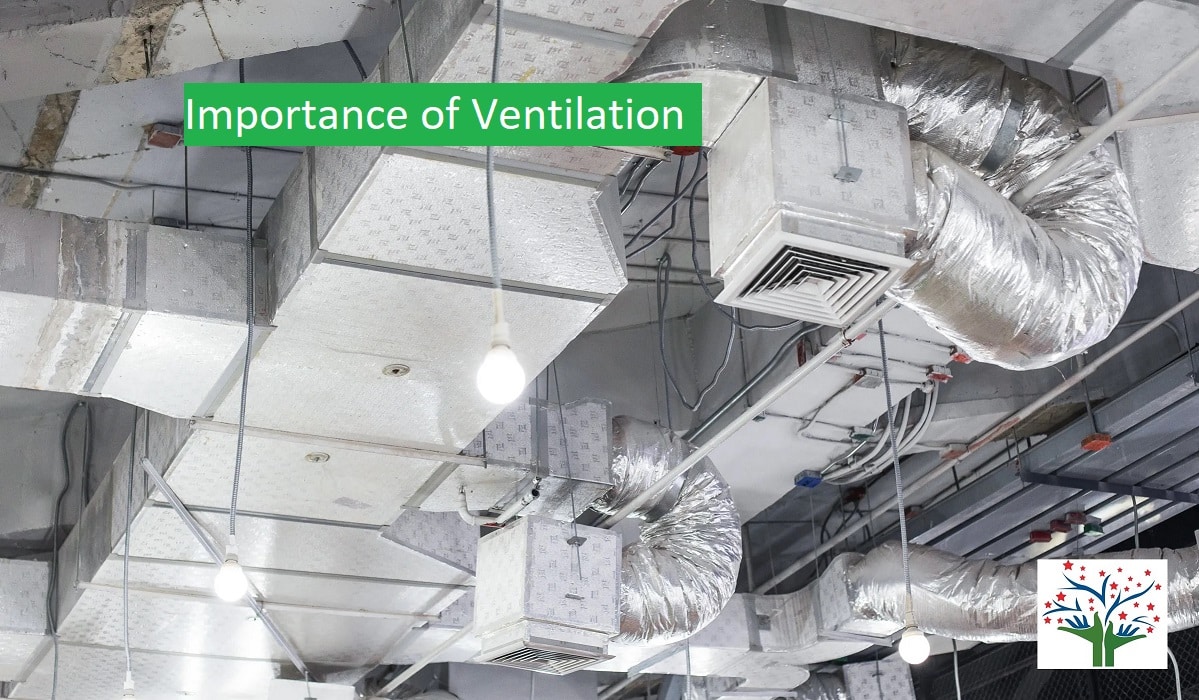
Importance of ventilation perfect pollucon services
For over 25 years, Perfect Pollucon Services has been at the forefront of industrial air quality management, ensuring workplaces have effective ventilation solutions. The importance of ventilation goes beyond just air circulation—it is a crucial factor in maintaining worker safety, productivity, and compliance with air quality regulations. Without proper ventilation, businesses risk airborne contaminants, poor air quality, and regulatory penalties.
Proper ventilation is essential for creating a comfortable and healthy environment, preventing the buildup of harmful substances, reducing the risk of respiratory issues and other health problems, and ensuring the safety and well-being of occupants.
It plays a crucial role in various settings, including homes, offices, schools, healthcare facilities, and industrial spaces, contributing to improved productivity, reduced absenteeism, and overall enhanced quality of life.
The importance of ventilation lies in its ability to provide fresh air while effectively removing pollutants and harmful airborne substances. Ventilation plays a crucial role in ensuring indoor air quality, particularly in industries and workplaces.
It involves the exchange of indoor and outdoor air to maintain a healthy and comfortable indoor environment. Ventilation serves several important functions, including regulating temperature and humidity levels, diluting and removing airborne contaminants, and promoting good indoor air quality.
Understanding the importance of ventilation in industries is critical for maintaining occupational health and safety. At Perfect Pollucon Services, we have over 25 years of experience in conducting ventilation assessments across various sectors, including pharmaceuticals, manufacturing, and chemical industries.
Case Study: In one factory, we found that improper exhaust placement caused recycled pollutants to linger in production areas, leading to worker complaints of headaches and fatigue. By optimizing ventilation layout, we reduced airborne contaminants by 40% and improved worker comfort significantly.
Learn more about our Ventilation Survey Service
Through our 25+ years of environmental monitoring experience, we’ve identified some critical ventilation mistakes industries make:
Good ventilation refers to the presence of a well-designed and properly functioning system that provides a continuous supply of fresh air while effectively removing stale or polluted air from an enclosed space.
It ensures adequate air circulation, regulates temperature and humidity levels, and maintains good indoor air quality.
Good ventilation promotes a comfortable and healthy environment by preventing the buildup of pollutants, controlling odors, reducing moisture-related issues, and minimizing the risk of respiratory problems or other health issues associated with poor air quality. It is crucial for both residential and commercial settings to create a pleasant and safe indoor environment for occupants.
There are three main types of ventilation in buildings:
The choice of ventilation system depends on factors such as climate, building design, occupancy, and specific requirements. Each type has its advantages and considerations, and the optimal approach may involve a combination of ventilation strategies to achieve the desired indoor environment.
Read more about Ventilation Assessment Procedure
Proper ventilation in an industrial setting can be exemplified by the use of a well-designed and maintained ventilation system in a chemical manufacturing facility. This system includes strategically placed exhaust fans and ductwork that effectively remove toxic fumes and vapors generated during production processes.
The ventilation system ensures that harmful substances are captured and expelled from the workspace, minimizing the risk of worker exposure and potential health hazards. It also aids in maintaining air quality by introducing fresh air into the facility, diluting any lingering pollutants, and preventing the buildup of hazardous gases.
By implementing proper ventilation, the facility creates a safer working environment, protects the health of employees, and ensures regulatory compliance with occupational health and safety standards.
In summary, ventilation is of paramount importance in the industrial sector to safeguard the health and safety of workers, control airborne contaminants, maintain comfortable working conditions, comply with regulations, and prevent accidents or hazards associated with poor air quality.
Investing in proper ventilation is not just a regulatory requirement but a smart business decision that enhances worker health, reduces operational costs, and boosts productivity.
At Perfect Pollucon Services, we understand the importance of ventilation in ensuring safe, compliant, and productive workspaces. Our expert team provides customized ventilation assessments, air quality monitoring, and compliance solutions for businesses across India.
Is your facility meeting ventilation standards? Contact us today for an expert evaluation!
With 25+ years of expertise, we provide customized ventilation assessments, air quality monitoring, and regulatory compliance solutions to optimize workplace environments.
Anil Shelke is the Executive Director at Perfect Pollucon Services with 30+ years of expertise in pollution control, environmental audits, hazardous waste management, and ISO 14001 implementation. He specializes in helping industries align with CPCB/SPCB regulations.
Ventilation reduces airborne contaminants, regulates humidity, prevents heat stress, and ensures compliance with safety regulations.
Industries should conduct a comprehensive ventilation audit at least once a year to ensure compliance with environmental safety standards.
Ventilation must ensure proper airflow, remove contaminants, regulate humidity, prevent heat buildup, and maintain indoor air quality. It should also be tailored to the specific needs of a space, whether industrial, commercial, or residential.
The key purposes of ventilation are:
Providing Fresh Air – Ensuring occupants have a continuous supply of oxygen-rich air.
Controlling Temperature & Humidity – Preventing excessive heat and moisture buildup.
Removing Contaminants – Eliminating pollutants like dust, gases, and fumes.
Preventing Health Hazards – Reducing respiratory risks and airborne disease spread.
Improved Air Quality – Reduces pollutants and allergens.
Better Temperature Control – Prevents stuffy or overly humid environments.
Energy Efficiency – Reduces reliance on artificial cooling.
Health Benefits – Lowers risks of respiratory issues and headaches.
Increased Productivity – A comfortable environment improves focus and efficiency.
In classrooms, good ventilation prevents the buildup of carbon dioxide (CO2) and airborne viruses, reducing drowsiness and improving concentration levels. It is crucial for student health and learning outcomes.
Ventilation in hospitals helps prevent the spread of infections, maintains sterile environments, and removes harmful airborne particles from operating rooms and patient care areas. Proper ventilation is essential for patient and staff safety.